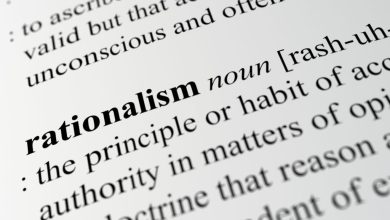Isaiah 53 cannot refer to Jesus because it says the servant of the Lord did no violence..
Isaiah 53 cannot refer to Jesus because it says the servant of the Lord did no violence, yet Jesus drove out the Temple money changers with a whip.
Jesus, who was known for his meekness and gentleness—all the way to the cross—did not engage in “violence” in the Temple courts. There is no record of anyone being hurt or injured, and in contrast to some of the ancient Israelite prophets like Moses, Joshua, or Samuel, Jesus did not put anyone to death in the name of the Lord. Obviously, he used a whip—not a sword—because his design was to clear the area, not to hurt anyone. This is hardly “violence” according to the standards of the Hebrew Scriptures. In fact, it’s unlikely he used a whip to drive people out; rather, the whip was used to drive out the animals.
It is interesting to note that Mahatma Gandhi and Dr. Martin Luther King Jr.—the two twentieth-century leaders best known for putting the principle of nonviolent resistance into practice—both learned this principle from Jesus. He was the ultimate example of a totally nonviolent man involved in radical action and change. The witness of the New Testament is very clear on this, even pointing out that Jesus fulfilled the words of Isaiah 42:1–4:
Here is my servant whom I have chosen,
the one I love, in whom I delight;
I will put my Spirit on him,
and he will proclaim justice to the nations.
He will not quarrel or cry out;
no one will hear his voice in the streets.
A bruised reed he will not break,
and a smoldering wick he will not snuff out,
till he leads justice to victory.
In his name the nations will put their hope.
Matthew 12:18–21
This is hardly the picture of a violent individual!
The specific question being raised here, however, does not have to do with the whole of Yeshua’s life but rather with his driving out the money changers from the Temple. Was not this an act of violence?
Let’s first consider what the Tanakh means by “violence” (Hebrew, hamas), since Isaiah 53:9b specifically states that the servant did no hamas. What exactly does this mean? The Hebrew noun hamas, “violence,” occurs sixty times in the Hebrew Bible, along with eight occurrences of the verb h-m-s, “to act violently, do violence.” What kind of actions are called “violent”? Actions such as murder, bloodshed, and robbery are, quite clearly, acts of violence, and the subject of Isaiah 53, as stated explicitly in verse 9, could not have committed any such acts. In keeping with this and true to his character, Jesus did not murder or shed blood, neither did he strike, hurt, rob, or assault anyone at any time, nor did he allow his followers to do so. In fact, when the Temple guards came to take him away by force in the middle of the night, his overzealous disciple Peter struck one of those guards, cutting off his ear. But Jesus rebuked him for his violence, telling him to put his sword away—before healing the man’s ear (John 18:10–11; see also Matt. 26:52, where the Messiah taught that “all who draw the sword will die by the sword”).
As for Yeshua’s controversial actions in the Temple, the text is clear: He made a whip of cords, drove out the sheep and cattle with that whip, overturned the money tables, scattered the coins, and ordered the money changers to get out, exclaiming, “Get these out of here! How dare you turn my Father’s house into a market!… It is written… ‘My house will be called a house of prayer,’ but you are making it a ‘den of robbers’ ” (John 2:16; Matt. 21:13). This is hardly “violence”!
It is understandable that some have failed to read the varied accounts in the four Gospels carefully and therefore have failed to put together the fact that John 2 mentions Jesus making a whip of cords (with which he drove out the sheep and cattle) while Matthew 21, Mark 11, and Luke 19 mention that he drove out the people selling. But the whip was for the animals; sharp words of rebuke were for the people. It is interesting that all four Gospels speak of this event (some believe it was actually two separate events), which indicates the great importance attached to the Messiah’s prophetic actions in the Temple.155 He was cleaning out his Father’s house, and it was a praiseworthy deed motivated by zeal for God and the work of God (see John 2:17). We should also point out that none of the Gospels record a single word of criticism from the Jewish leadership for Jesus’ actions here, even when false witnesses were being brought to slander and attack him (Matt. 26:59–61). Not a word about this incident was spoken by any of his accusers—obviously because there was nothing worth mentioning. (None of the Rabbinic literature mentions this incident either, despite the fact that there are some ugly attacks on Yeshua in that literature. See vol. 1, pp. 136–39, for more on these anti-Jesus hostilities.)
Returning again to the specific nature of hamas, “violence,” in the Tanakh, we must remember that Moses, Joshua, David, Samuel, and other great leaders put people to death at God’s command, yet they were not called “violent” because of their deeds. That is because hamas speaks of illegal violent acts, as opposed to simply carrying out God’s righteous judgments against sinners. Thus, when Moses called on the Levites to put their fellow Israelites to death for their idolatry, they were not committing violence (Exod. 32:25–28); when Joshua killed the five Canaanite kings, he was not committing violence (Josh. 10:16–27), nor was Samuel when he chopped up the Amalekite king, Agag (1 Sam. 15:32–33). How then could anyone say Jesus acted violently when he drove out animals with a whip and overturned the tables of money changers? This is certainly not violence!
What I find most ironic is that anti-missionaries say Isaiah 53 cannot possibly apply to Yeshua because of his alleged violence in cleansing the Temple, yet they freely apply Isaiah 53 to the nation of Israel (or the righteous remnant within Israel; see above, 4.6). Yet our people have been at their most heroic historically when they have used armed, forceful resistance against their adversaries—be it the warring Maccabees in the second century C.E., the courageous fighters of the Warsaw Ghetto uprising during the Holocaust, or the Israeli Defense Forces (IDF) who recaptured the Golan in 1973. We commend our people for heroic acts of war! How then can we apply Isaiah 53 to Israel—as a nonviolent people—while disqualifying Yeshua, the greatest example of nonviolence the world has ever known? Obviously, we cannot.
[1]
155 For discussion of the various Gospel accounts of this incident (whether there was one cleansing of the Temple or two), cf. the standard evangelical commentaries on the Synoptics and John.
[1]Brown, M. L. (2003). Answering Jewish objections to Jesus, Volume 3: Messianic prophecy objections (77). Grand Rapids, Mich.: Baker Books.


